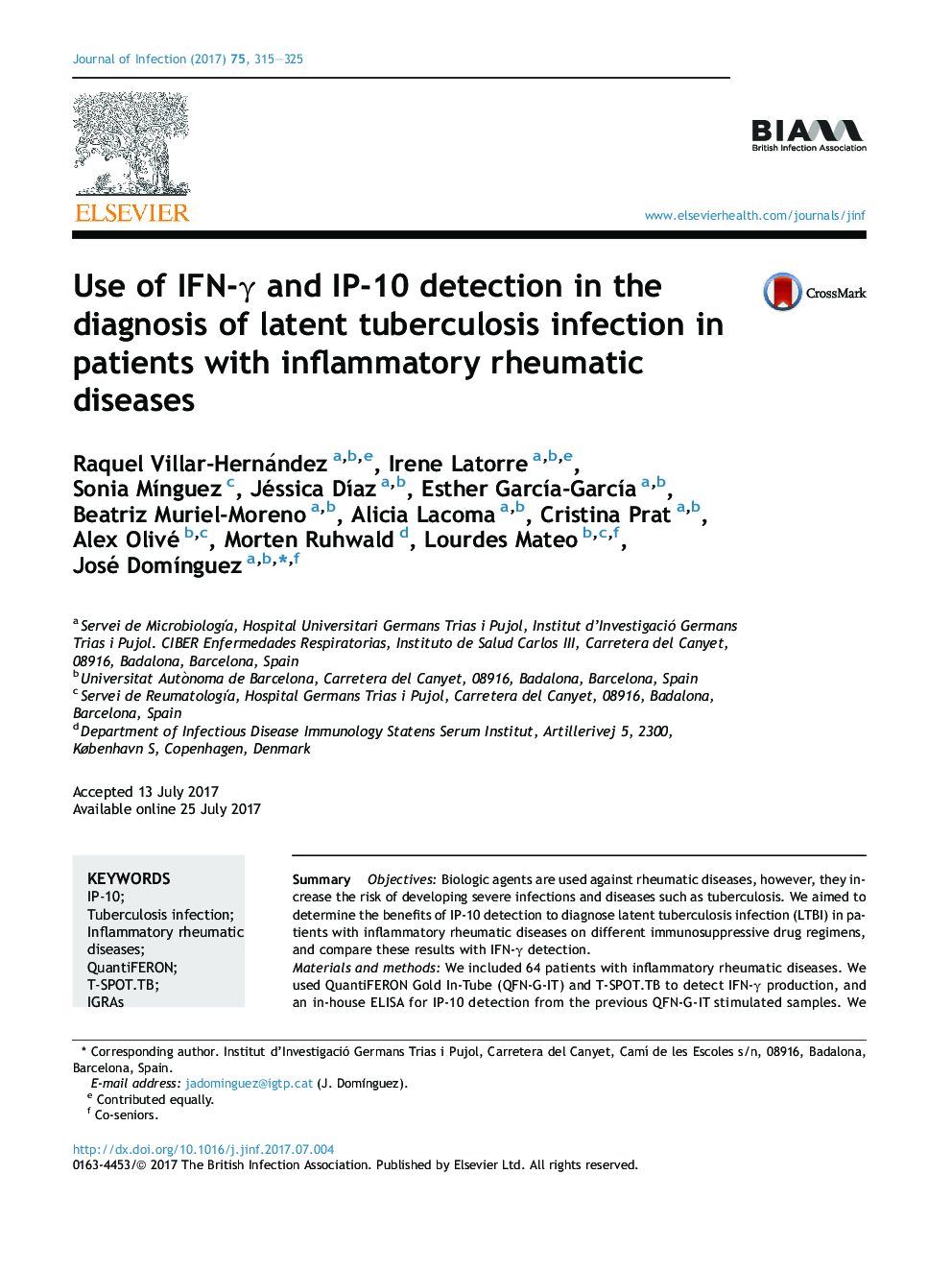| Article ID | Journal | Published Year | Pages | File Type |
|---|---|---|---|---|
| 5668578 | Journal of Infection | 2017 | 11 Pages |
â¢IP-10 could be a good alternative for LTBI diagnosis in rheumatoid patients.â¢IP-10 and IFN-γ detection is comparable in this cohort of patients.â¢IP-10 and IFN-γ combined detection increases the number of positive results.â¢In our cohort, rheumatoid immunosuppressive therapies do not affect assay performance.
SummaryObjectivesBiologic agents are used against rheumatic diseases, however, they increase the risk of developing severe infections and diseases such as tuberculosis. We aimed to determine the benefits of IP-10 detection to diagnose latent tuberculosis infection (LTBI) in patients with inflammatory rheumatic diseases on different immunosuppressive drug regimens, and compare these results with IFN-γ detection.Materials and methodsWe included 64 patients with inflammatory rheumatic diseases. We used QuantiFERON Gold In-Tube (QFN-G-IT) and T-SPOT.TB to detect IFN-γ production, and an in-house ELISA for IP-10 detection from the previous QFN-G-IT stimulated samples. We assessed the combined use of IFN-γ release assays (IGRAs) and IP-10 test, and analyzed the influence of immunotherapy on the tests performance.ResultsWe obtained 34.9% positive results by T-SPOT.TB, 25.0% by QFN-G-IT and 31.3% by IP-10 test. The combined use of IGRAs and IP-10 detection increased significantly the amount of positive results (p < 0.0001). Treatment intake had no significant effect on in vitro tests (p > 0.05).ConclusionsIP-10 and IFN-γ detection is comparable and their combined use could increase the number of positive results in the diagnosis of LTBI in rheumatic patients. The tested assays were not influenced by rheumatoid immunosuppressive therapy. Thus, IP-10 could be of use in the development of new and improved LTBI diagnostic tools.
